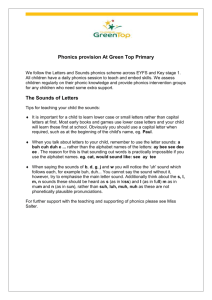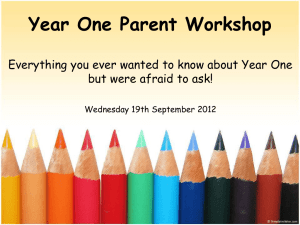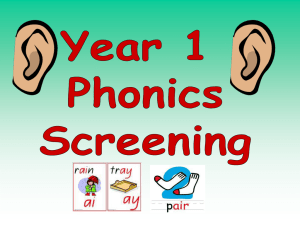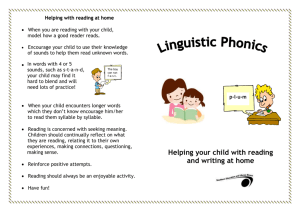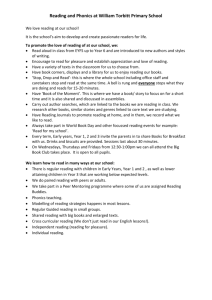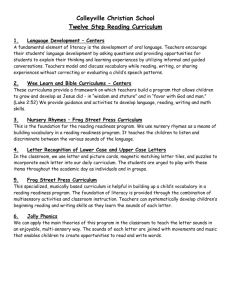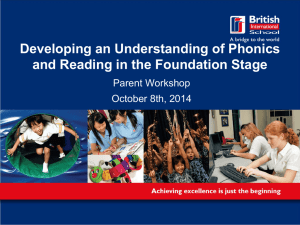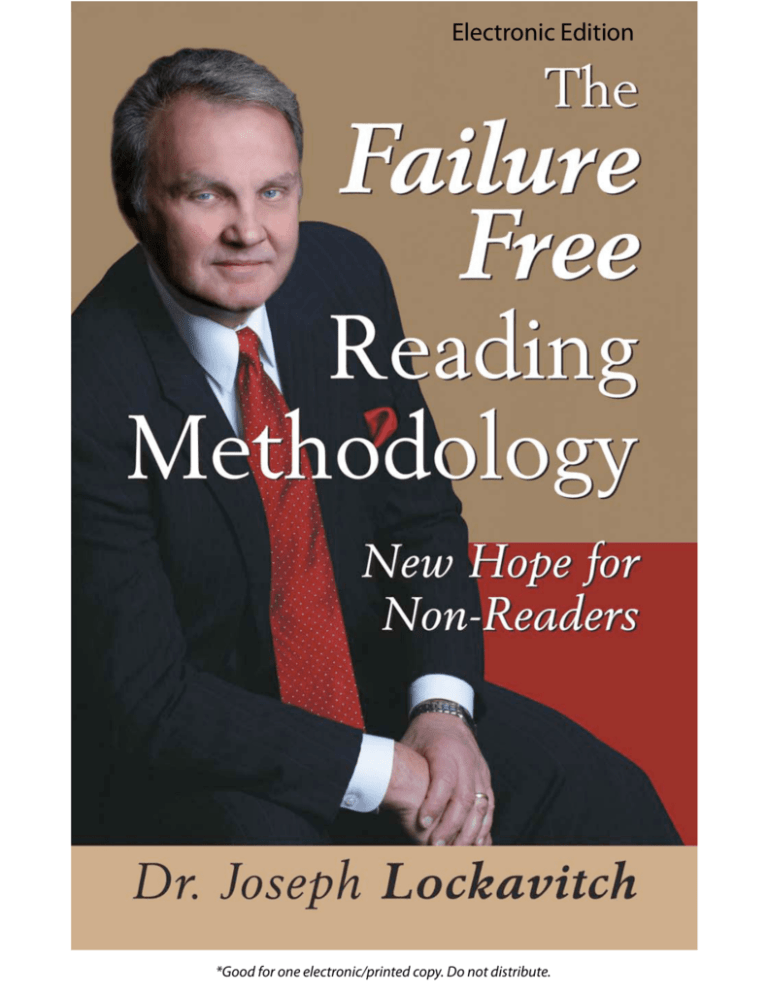
Electronic Edition
*Good for one electronic/printed copy. Do not distribute.
The
Failure
Free
Reading
Methodology
New Hope for
Non-Readers
By
Dr. Joseph Lockavitch
© 2007 Dr. Joseph Lockavitch
All Rights Reserved.
No part of this publication may be reproduced, stored in a retrieval system, or transmitted, in any form or by any means, electronic, mechanical, photocopying, recording, or otherwise, without the written permission of the author.
First published by Dog Ear Publishing
4010 W. 86th Street, Ste H
Indianapolis, IN 46268
www.dogearpublishing.net
ISBN: 978-159858-305-2
Library of Congress Control Number: 0000000000
This book is printed on acid-free paper.
Printed in the United States of America
Table of Contents
Forward . . . . . . . . . . . . . . . . . . . . . . . . . . . . . . . . . . . . . . . . . . . . .iii
Chapter 1
What are the assumed causes of reading failure? . . . . . . . .1
• Give Failing Students Credit
• An Important Conversation with Parents
at a Complete Loss
• Dramatic Change in Attitude
Failure Free Reading Case Study
Fairland East Elementary After-School Solution . . . . . . .22
Chapter 2
What really causes reading failure? . . . . . . . . . . . . . . . . .28
• Why Can’t Researchers be Honest
• Reading Bigotry
Letter From a Parent . . . . . . . . . . . . . . . . . . . . . . . . . . . . . . . . . .37
Chapter 3
Three Characteristics of Non-Readers . . . . . . . . . . . . . . .39
• The Plight of the Phonetically Deaf
• The Plight of the ED Student (Environmentally
Denied)
• Language First—Reading Second
Teacher Testimonial
What Failure Free Reading Has Done
For My Deaf Students . . . . . . . . . . . . . . . . . . . . . . . . . .61
iv
Dr. Joseph Lockavitch
Chapter 4
Three Instructional Elements for Reading Success . . . . .62
• The Ten Word Chop
• Language Rich with Idioms
Failure Free Reading Case Study
Washington D.C. Summer Reading Blitz
for Special Education . . . . . . . . . . . . . . . . . . . . . . . . . .79
Chapter 5
Five Traditional Reading Approaches . . . . . . . . . . . . . . .83
• One of the Biggest Mistakes
Chapter 6
Putting The Failure Free Reading
Methodology Into Play . . . . . . . . . . . . . . . . . . . . . . . . .96
• Watch Out for the “Classics”
• Praise, Pride, and Confidence
Appendix A:
Commonly Asked Questions from Parents
and Educators . . . . . . . . . . . . . . . . . . . . . . . . . . . . . . .132
• “What makes the Failure Free Reading
Methodology so different?”
• “Why do you think it is better to put struggling
non-readers into higher grade level material?”
Appendix B:
30 Ways to Improve Your Student’s Reading
Ability . . . . . . . . . . . . . . . . . . . . . . . . . . . . . . . . . . . . .151
Appendix C:
Failure Free Reading Testimonials . . . . . . . . . . . . . . . . .173
Bibliography . . . . . . . . . . . . . . . . . . . . . . . . . . . . . . . . . . . . . . . .184
About the Author . . . . . . . . . . . . . . . . . . . . . . . . . . . . . . . . . . . .187
Forward
Here are three indisputable reading facts. Nobody can deny them. These
facts have stood the test of time.
1. Students are failing to read.
2. Students will continue to fail to read.
3. One of these students might be yours.
Reading failure in our schools and our society is a major issue. There
are over 24 million functional illiterates in the United States. Every year,
over 800,000 students drop out of school.
The prisons are at capacity—most with prisoners who cannot read
above a third grade level. Businesses are investing billions of dollars in programs to upgrade the literacy skills of their own employees.
Fortunately, given all of this, there is one fact that is more important:
reading failure can be treated and prevented.
One of the biggest problems facing parents and teachers today has
been the need for a fast acting, easy to use literacy program for non-readers: students and adults who have an independent reading level between 0.0
and 3.0. This deep need is something of which I have first hand knowledge.
During the past 30 years, as a former classroom teacher, special education director, school psychologist, and university professor, I have been
involved in the plight of the non-reader. My initial involvement began
shortly after I had finished a training session with a group of teachers for
learning disabled students. I had just finished a session summarizing the
most commonly used remedial reading approaches. When I finished, the
participants echoed a theme I had heard many times before, “We appreciate what you have told us and the approaches you mentioned look very
good—especially for those students with mild to moderate reading needs,”
they said, “but what about the kids who can’t read a lick?” one teacher
asked, “What are we to do all day with these non-readers?”
A Nagging Question
The question of what to do with non-readers was one that had also bothered
me when I was a special education teacher. I noticed, first hand, a huge difference between the terms “struggling readers” and “non-readers.” While
all of the remedial programs had value for “struggling readers” (students as
many as four years behind), they simply did not work for a hard-core group
of non-readers. I was still meeting students who continually defied conventional instruction. I tried everything I knew and yet, they were still failing miserably; I could not reach them. No matter how hard I tried (and boy,
did I try) they still were no better off. And so, I asked myself, “What could
be done? What could be done to impact on the lives of these students who
are dying on the literacy vine?” Little did I know that I was about to embark
on a thirty-year journey.
Thirty years of trying to find a solution to one ongoing problem.
Thirty years of trying to rescue the lives of millions of students who are
drowning in the classroom. Should I stop? No, I cannot stop when these
students actually are growing in numbers. Even worse, the system is creating them every day thanks to the constant arguing, backbiting and a “one
size fits all” mentality.
Stop the Either/Or Approach
I began to look at the two basic approaches to the teaching of reading.
These two approaches are still dominant today. The more I studied the position taken by the proponents of each philosophy, the more I was reminded
of an old TV commercial. The commercial centered on defining the product—what the product really was. Was it a breath mint or a candy mint? The
commercial involved two people defending the opposite point of view. One
person would scream “It’s a breath mint!” while the other person would
scream back “No, you’re wrong, it’s a candy mint!” Both people were
absolutely sure they were right and that the other person was wrong. They
were at what appeared to be an unsolvable impasse. Finally, at the end of
The Failure Free Reading Methodology: New Hope for Non-Readers
vii
the commercial, an unseen announcer would state: “Stop, you’re both right!
They’re two, two mints in one!” It seems the same holds true today in the
teaching of reading, both philosophies are right! Unfortunately, when it
comes to the plight of the non-reader, both philosophies are wrong—dead
wrong!
Reading is not an either/or approach for our non-readers. Reading is
not either phonics or whole language. Reading is much more complicated
than that. Reading is an interactive process that involves giving non-readers (regardless of age) simultaneous access to the three instructional elements crucial to reading success. In other words, non-readers, regardless of
age, must be in highly repetitious materials, written in a basic sentence
structure and containing content that is easy to relate to. Sadly, none of the
existing reading approaches utilize materials that control for simultaneous
access to these critical elements. So, armed with this knowledge I set out to
create a reading methodology that did.
The Failure Free Reading Methodology: New Hope for Non-Readers
43
ing. (Remember what you did in our “right to left” reading example.)
For example, students who responded, “The kids were outside playing,” would not be rewarded. Most would be told they were incorrect and to
go back and first look at the letters. What are the sounds that go with the
letters? Look at the beginning sounds. Look at the vowels. What sounds do
they make? What are our rules about these letters and the sounds? Soon, the
students only make phonetically correct errors such as, “The bays and grils
were outslide paying in the year.” While we can figure out how they were
able to come up with what they did (concentrating too much on the letters
and sounds) their response makes absolutely no sense.
PD Students
While the danger of Acquired Hyperlexia is real and is a much overlooked,
there is an even greater danger associated with teaching phonics to many
non-readers. It has to do with the first characteristic associated with nonreaders—PD students.
PD stands for the phrase “phonetically deaf.” What do you mean???
Are you telling me that phonics is bad?? I thought phonics was the answer
to all of our reading woes. Isn’t that what their research says? Isn’t the lack
of phonics a primary factor in the current mess we are in? Well, before I
answer that, let me remind you about what I first said about the three key
reading research facts. Remember those facts? All reading programs work;
so no, I’m not saying phonics is bad. But, it’s not for all students (and yes,
I am saying phonics is not appropriate for many). I am not here to attack
phonics. Instead, I am going to put it in its proper perspective.
Here is the plain truth. There are some students (adults as well) who
will never learn to read by using phonics. They were born with a “tin ear”
for sounds. Like it or not, you could dedicate the next 120 years of your
professional life trying to teach letter sounds and at the end of this time,
they still wouldn’t get it. I know this first hand, because I am “phonetically
deaf.”
The Plight of the Phonetically Deaf
Let me make one key point here. I am not deaf. I hear great. I don’t have a
sensory impairment. I do not suffer from any hearing loss. I can pass any
hearing acuity test. I just don’t make sense out of many letter sounds. I have
a perceptual impairment. I don’t know why. Frankly, I don’t care. It’s not a
44
Dr. Joseph Lockavitch
big deal. I’m a very poor speller. That’s why I have spell checker. I can recognize a misspelled word by appearance and I can use a dictionary better
than most. Let me elaborate.
I barely manage to get by in the world of letter sounds and there are
times when this condition really rears its ugly head. Let me give you an
example of how my inability to discriminate certain letter blends disrupts
my life.
I have two good friends. One is named Craig and the other Greg. I
have known them for decades and yet, I am constantly calling Craig, Greg
and Greg, Craig. It drives my wife crazy.
“Why do you do this?” my wife asks.
“I just can’t make the distinction,” I reply. And I can’t. In fact, I have
to mentally visualize their names and associate them with key words to
make the oral distinction. I simply don’t hear the distinction. Believe me;
I’ve tried to hear the distinction over the past two decades!
In other words, I have to see in my mind the “Cr” in Craig and associate it with the “Cr” I see in the word creek. Then I have to say both words
aloud in order to distinguish between Craig and Greg. Craig is the word I
see that starts with the “cr” in creek. This is a lot of work. It’s not easy.
My reading comprehension scores are high. I have a Doctorate in
Education, written close to a dozen published journal articles, developed a
complete reading intervention series, and authored dozens of student booklets and this book as well.
The Generational Lottery
I didn’t need phonics to learn to read. So, don’t cry for me. I was lucky. I
was a winner in Reading’s Generational Lottery. I was born when “sight,”
visual or in more common terms—“Dick and Jane” was in and phonics was
out. Quite frankly, this saved my life. But you sure can cry for the millions
of school age PD students who are being brutalized daily by this generation’s dogmatic “phonics only” approach. These Phonetically Deaf students
are failing miserably. These PD students are beating themselves up internally. They think they’re at fault. They need help now.
“How can you say this?” you might ask me. Who gives me the right
to attack phonics like that? How can I stand there and defy the abundant
amount of research supporting phonemic awareness, phonics and phonics
based remedial intervention? Didn’t I read the National Reading Panel
Report? Haven’t I read the literature written by the experts?
The Failure Free Reading Methodology: New Hope for Non-Readers
45
Yes, I did read the report and the articles. In fact, this is one of the
main reasons why I feel fully confident in taking my stance. Frankly, I only
wish key decision makers had read the research as well. If they did, they
might be amazed at the number of times terms such as “treatment resisters”
and “non-responders” are included in almost every review of the literature.
Researchers over the past two decades have recognized students with
a core deficit in phonological processes and it is no small number.
Researchers, Stephanie Al Otaiba of Florida State University and Douglas
Fuchs of Vanderbilt University wrote in their article, Characteristics of
Children Who Are Unresponsive to Early Literacy Intervention: A Review of
the Literature (2002), that up to 30% of regular education and 50% of special education students fail when phonics are used! These students have difficulty processing letter sounds. This group currently makes up the largest
number of at-risk and severely reading disabled students. While there is no
controversy that PD students exist, there is considerable disagreement over
how to treat them.
Two Schools of Thought
Basically, there are two schools of thought: remedial or compensatory.
Remedial proponents attempt to eliminate phonological deficits by
intensive intervention. Remedial proponents believe that students must
identify and apply the relationship between sounds and letters if they are
ever going to learn to read. Remedial proponents cannot fathom a world in
which students can learn to read without first learning sounds. Their primary goal is to remediate this deficit. Their primary argument for teaching
sounds is that there are only 44 English sounds represented by 26 letters.
Remedial proponents believe that it is impossible to memorize the
millions of words contained in the English language. To them, phonic rules
provide a systematic method to decode practically every word they will
contact. To these proponents, learning the phonic rules provides the most
logical approach to attack unknown words.
Remediation is currently the prevalent educational approach used in
our schools today. Billions of dollars are being spent on remedial methods
and materials designed to correct phonological deficits. Remedial proponents cite as evidence the most recent research published by the National
Reading Panel and the National Research Council.
Now hold on just a minute! Didn’t you just cite the very same
research as the basis for your argument against remediation? Are you losing your mind? What gives?
46
Dr. Joseph Lockavitch
Well, yes. You are correct. Let me explain. The systematic teaching of
phonics and phonemic awareness (a fancy name for the 44 different
sounds) is the heart and soul of 40% of the current federal mandate of scientifically validated reading research programs. Schools are being mandated to include training in phonemic awareness and systematic phonics in
addition to vocabulary, fluency and comprehension. However, there is a
problem with the remedial model; it just doesn’t work for everyone!
Students Who Defy Intensive Phonic Remediation
As I mentioned, there is a significant number of students who defy intensive phonological and phonetic remediation. Like me, they have a dysfunctional “letter to sound” route. The most recent research by the National
Reading Panel confirms this. The effects of phonics and phonological
awareness (PA) training appears to have little impact past K—1st grade!
67% of the PA and Phonics effectiveness studies showed no meaningful
improvement in Oral Reading (effect size < .3). Even worse, phonics
instruction had no impact on the reading performance of low-achieving
readers in grades 2-6 (effect size = .15). Systematic phonics did not
improve spelling in grades 2-6 (effect size = .009) and had no impact on
passage comprehension in grades 2-6 (effect size = .12).
In addition, the National Reading Panel found that one out of every
six studies measuring the efficacy of systematic phonics instruction (how
good it works) actually produced negative results in reading comprehension. Finally, it appears that there is a 20-hour incubation period for phonic
effectiveness. More instructional time does not improve the phonemic
awareness of “phonetically deaf ” students. They simply do not improve
much, even if they receive hundreds and hundreds of hours of more phonics.
The notion of students who can’t hear sounds and subsequently cannot learn to read using phonics is not new. Special educators have been
familiar with this idea for decades as demonstrated in the work of Helmer
K. Myklebust in the sixties. Mykelbust, noted researcher, author, and head
of the Institute for Language Disorders at Northwestern University, listed in
his research classic, Learning Disabilities Educational Principles and
Practices (1967), the following characteristics of students with what he
called auditory dyslexia:
Inability to relate letters to sounds
Can’t “hear” similarities in initial and final sounds ~ in words
The Failure Free Reading Methodology: New Hope for Non-Readers
47
Short vowels one of their greatest difficulties
Can recognize “pin” “pen” in context but not in ~ isolation
Can’t recognize a rhyme or think of words that ~ rhyme
Can’t break words into individual syllables or sounds
Can’t combine the sounds to form a whole word
Can’t learn to read by a phonic or elemental approach
Why can’t they learn to read using a phonetic approach? Because they
are, what I have already called, “phonetically deaf.” “Phonetically deaf ”
students don’t hear the sounds or can’t comprehend the relationship to
sounds and letters regardless of age or length of treatment. In other words,
phonics “ain’t ever gonna be their thing.”
Therefore, the bad news is that there are large numbers of students
who will not learn to read using phonics. Dr. Joe Torgeson of Florida State
University, cited in, Preventing Reading Difficulties in Young Children,
calls this group “treatment resisters.” “Up to 25% of at-risk children who
receive training in phonological awareness, ‘gain little insight in the structure of spoken words, much less into reading by the end of training’ (Torgesen et al., 1997).” Dr. Torgeson concluded by stating that another reading
alternative is needed.
As I previously mentioned, Otaiba and Fuchs (2004), fully agree with
Torgeson when they state, “…few researchers have suggested that either
phonological awareness training or beginning decoding instruction is a silver-bullet solution that prevents reading difficulties in all children. Indeed,
investigators have reported that as many as 30% of children who are at-risk
for reading difficulties and as many as 50% of children who have special
needs may not benefit from generally effective phonological and decoding
instruction.” (Page 1). They cite twenty-three different phonological and
decoding intervention studies that document the existence of significant
numbers of “treatment resisters” in each study.
The Good News
However, there is good news. Whether they are called “Treatment
Resisters” or “Phonetically Deaf,” these students can learn to read utilizing
compensatory methods such as Failure Free Reading. In most cases, they
can have an immediate and successful reading experience.
Compensatory proponents believe in teaching to the students’
strengths. For example, the obvious alternative to help a student with poor
phonics would be a “sight based” reading approach. While researchers like


